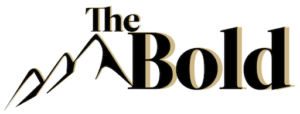How CU Came to Boulder: The Complicated and Incomplete History
From its days as an emerging town, Boulder sought to have a university.
As the Colorado Territory formed, members of the Boulder community lobbied to have the eventual territorial university, the University of Colorado, within Boulder’s confines.
In 1861, at the territorial legislature, efforts by lawmakers moved to establish a territorial university. Representatives from the Boulder area, Robert Culver and Charles H. Holly, were particularly ambitious in this process, introducing the original legislation to vote on the school and its location.
After three rounds of voting at the territorial capital, Boulder’s wish came to fruition. Boulder received eight votes for the university, outpacing Denver which earned three, Golden which earned one, and Cañon City which also pulled one vote.
Despite that early momentum, though, from 1861 to 1870, there is a gap in the university’s existence. Where early Boulderites had lobbied to have the university, no tangible actions took place to form governing bodies or erect a physical campus until the mid-1870s.
While it is unclear why this gap occurred, other historical context shows possible explanations. The U.S. Civil War disrupted national life from its period between 1861 and 1865. In this same gap period, priorities also fluctuated among Colorado and Boulder residents, who increasingly agitated indigenous people in the area, ultimately resulting in the Sand Creek Massacre. Among these agitators included Dave Nichols, a vocal advocate for CU’s establishment, whocontributed to the murder of dozens of Cheyenne and Arapaho people.
Even with the gap, some sources suggest that Boulderites still advocated for the university in their hometown. In the nine year gap, residents adopted the slogan “Give Boulder the State University, and the rest of Colorado may take all other institutions.” Locals continued pressing forward to having the university, as a way to bolster the lifeline of the frontier town, and build a more educated populace.
In 1870, the University of Colorado showed more promise of coming to pass. At the territorial legislature, Boulder County representative Thomas Graham introduced legislation to solidify the university in Boulder City. However, John Wells from Burlington—present-day Longmont— made an amendment to strike “Boulder City,” and replace it with Burlington.
The legislature struck down Wells’ amendment, and proceeded with Boulder as the home of the state’s flagship. Longmont later established its own Longmont College in the following decade, which enrolled students from 1885 to 1893. Around the same time of Burlington prying for the university, representatives from Denver and Cañon City also made less visible efforts to obtain the flagship.
It was in 1870 that the Board of Trustees for the University of Colorado gathered once more, after having been on hiatus since 1861.
With the university becoming more likely to open in Boulder, Boulder residents began collaborating more to make the hope from 1861 a reality. Local landowners began deeding land for the physical campus. In total, 51.3 acres was accrued, from local couples Marinus and Annie Smith, George and Mary Andrews, and Anthony and Mary Arnett. (The land was valued at the time as $1,206.)
Other land in Boulder was considered for the university’s establishment. Before the gifts from the Smith, Andrews, and Arnett couples, locations at modern day Mapleton Avenue and Lover’s hill were under consideration. These lands were rejected due to unideal geography and extensive work needed to improve the land.
Even with the land, one major hurdle remained: money. Not until 1874 did the Colorado legislature establish $15,000 in funds to begin construction of a campus building, with the contingency that Boulder residents needed to raise matching funds through cash subscriptions. This level of fundraising, though, was nearly impossible in Boulder at the time.
A small agricultural community with young and scant business, the tall task of $15,000 felt insurmountable. Extensive campaigning began to try to keep pace, with a year-long effort successfully raising $16,806.66 from 104 local families.
These contributions came as a burden for some who donated. One family that had donated $500 to the university efforts fell destitute later, unable to raise as much as “five cents now,” per the matriarch. Those who had donated funds gave so as a sacrifice of themselves, an enduring gift for others to receive education later on.
With more than $30,000 in funds to officially construct and maintain the University of Colorado, Boulder’s dreams came to life.
On September 20, 1875, the cornerstone for Old Main was placed. Despite plans to have an elaborate gala for the placement, poor weather upturned those plans, making for a quiet and snowy affair.
By 1877, when the building was complete and the university first opened its doors, Jane Sewall, daughter of the university’s first president, Joseph Sewall, described the building as “gaunt and alone in the pitiless clear light. No tree nor shrub nor any human habitation was in sight. Vast expanses of rock and sagebrush were its only surrounding.” Even with that harsh description, that lonely building represented years of enduring efforts for its very existence.
While there is a varied amount of information available, there are some discrepancies about CU’s founding. Folklore persists in the narrative, including a story of how Dave Nichols took a stormy midnight ride to Denver in 1874 to secure funds directly. Per Mona Lambrecht, curator of history at the CU Heritage Center, no evidence exists to support that myth. Moreover, a lack of information about that nine-year gap makes the history harder to define and recount.
Below is a series of postcards and current pictures throughout the twentieth century to the present day that give an insight into how the physical space of CU Boulder has evolved. From a peaceful look at Varsity Lake to the Kittredge Complex, these postcards offer an insight to the smaller life of CU in the past hundred plus years, while the photos offer insight to how the university has grown.
Captioned years are not without limitations, either based on post office stamps or after consultation with maps that detail the years of edifice construction. All images are credited to the postcard creator or distributor, as identified from the backings.
This article pulls from multiple sources of local history and insights from the aforementioned Mona Lambrecht, along with curator of history Erik Mason at the Longmont Museum.

